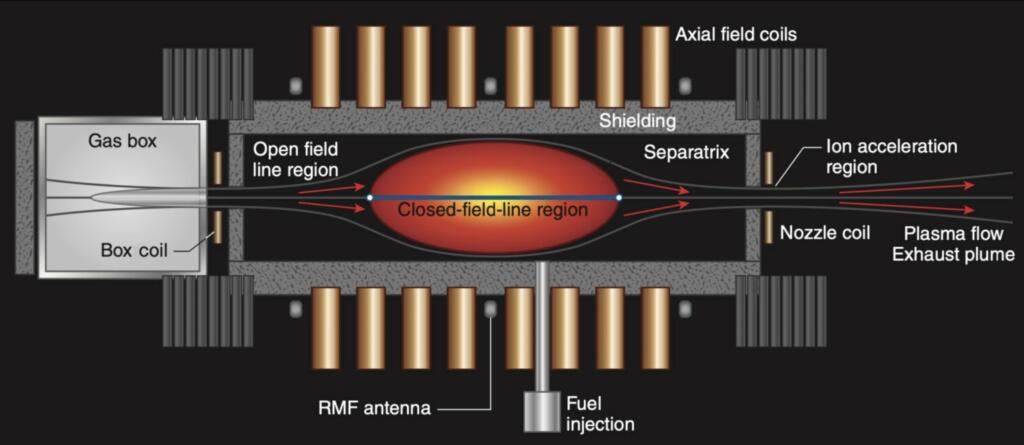Pulsar Fusion, a propulsion startup based in England, announced last week it is partnering with the University of Michigan to research electric Hall-effect thruster tech. The UK Space Agency is funding the collaboration.
Pulsar recently began developing in-space electric propulsion systems to capitalize on the growing demand for the tech. The U of M partnership will allow the company to further develop the capability.
Electric propulsion Hall-effect thrusters are commonly used to power spacecraft in orbit. The propulsion system uses electricity to ionize and accelerate a propellant (xenon or krypton) to produce thrust.
Electric propulsion is much more efficient than combustion engines, achieving a specific impulse (Isp) of 2,000+ seconds. For comparison, SpaceX’s Raptor engine has <400 seconds of Isp. The tradeoff with electric propulsion is that it packs far less of a punch when it comes to thrust. Pulsar Fusion is working on Hall-effects thrusters, nuclear electric propulsion and developing its direct drive fusion propulsion. Youtuber, the Angry Astronaut, visited Pulsar Fusion facilities and reported on their work.
Larger Goals and Overall Business
Pulsar Fusion is trying to create a nuclear fusion rocket able to move astronauts at 500,000 mph which is twenty times faster than the 24,791 mph speed of fastest a crewed rocket has ever flown. The company has raised over $133 million in funding across 19 funding rounds with 65 investors.
Pulsar recently partnered with aerospace R&D company Princeton Satellite Systems (PSS) for a study that will use AI to model the behavior of hot plasma in a fusion rocket engine. It has also announced that it has begun constructing an eight-meter fusion reaction chamber in the UK.
Its goal is to begin firing that chamber in 2025 and achieving fusion temperatures by 2027. The next step after that would be conducting a test firing in orbit — proving that a fusion rocket could potentially power the next era of space exploration.
The Direct Fusion Drive is a revolutionary steady state fusion propulsion concept, based on a compact fusion reactor. It will provide power of the order of units of MW, providing both thrust of the order of 10−101N with specific impulses between 10,000 – 15,000 seconds and auxiliary power to the space system.
Pulsar is developing non-fusion products that could bring in revenue. They are working on a Hall-effect electric thruster for spacecraft and a second-stage hybrid rocket engine. Pulsar Fusion is partnering with the University of Michigan to research electric Hall-effect thruster tech. The UK Space Agency is funding the collaboration.






Brian Wang is a Futurist Thought Leader and a popular Science blogger with 1 million readers per month. His blog Nextbigfuture.com is ranked #1 Science News Blog. It covers many disruptive technology and trends including Space, Robotics, Artificial Intelligence, Medicine, Anti-aging Biotechnology, and Nanotechnology.
Known for identifying cutting edge technologies, he is currently a Co-Founder of a startup and fundraiser for high potential early-stage companies. He is the Head of Research for Allocations for deep technology investments and an Angel Investor at Space Angels.
A frequent speaker at corporations, he has been a TEDx speaker, a Singularity University speaker and guest at numerous interviews for radio and podcasts. He is open to public speaking and advising engagements.


The thing that always puts a question mark in my mind with regards to this outfit is why are they developing conventional launch vehicles to get this fusion-powered vehicle into space?
I would think calling 1-800-SpaceX has to be an infinitely more practical solution to get their craft to orbit rather than wasting precious development dollars on a duplicative solution.
Hell, if it works and I was Pulsar, I would just work out a swap deal with Elon, I guarantee you he could make great use of this technology for a Mars Transport.